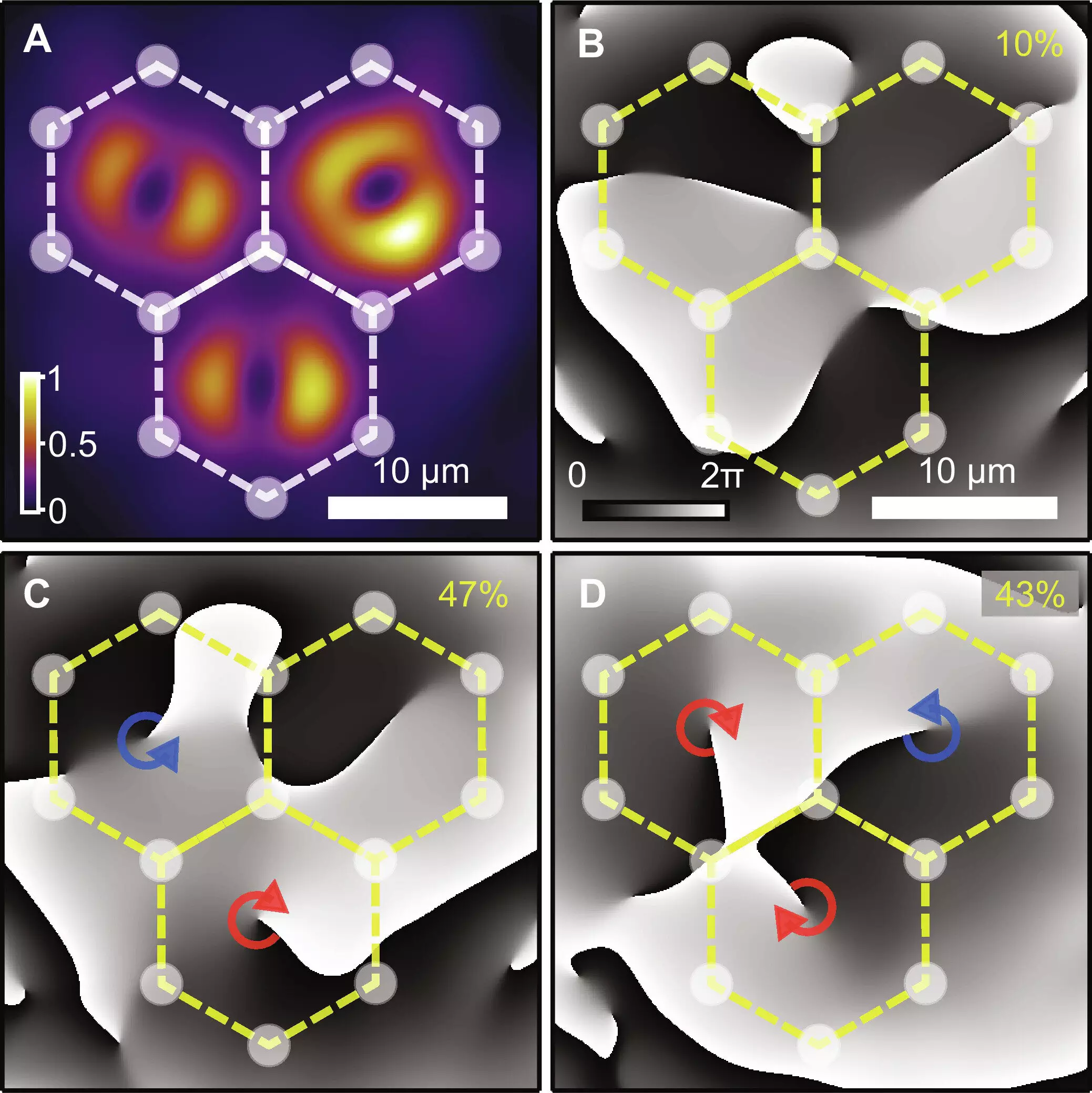Researchers from various institutions have recently made a groundbreaking discovery in the field of quantum mechanics. A collaborative effort from Skoltech, Universitat Politècnica de València, Institute of Spectroscopy of RAS, University of Warsaw, and University of Iceland has led to the demonstration of the spontaneous formation and synchronization of multiple quantum vortices in optically excited semiconductor microcavities.
Optical Excitation of Semiconductor Microcavities
The researchers utilized optically structured artificial lattices comprising of coupled polariton vortices to create a new platform for studying and simulating condensed matter systems. By replacing spin angular momentum with orbital angular momentum of the polariton condensate, they were able to observe the dynamics of quantum vortices in exciton-polariton systems. This work represents a significant advancement in the field as extended two-dimensional lattices of phase-locked quantum vortices had not been demonstrated before in such a driven-dissipative system.
At Skoltech’s Photonics Center’s Hybrid Photonics Laboratory, led by Professor Pavlos Lagoudakis, the researchers conducted experiments using a semiconductor planar microcavity. By optically exciting the microcavity sample with a patterned laser beam, they were able to create a triangular lattice with 22 cells, each containing a trapped polariton condensate carrying a single-charge vortex. The lattice parameters were varied, leading to the condensation of polaritons inside the cells of the lattice.
In a pair of neighboring cells, it was observed that the vortices interacted to form stable solutions with opposite topological charges. This antiferromagnetic coupling between the vortices was a key finding of the study, shedding light on the behavior of these quantum phenomena in closely packed structures. The researchers further expanded their study to a triangular three-cell structure and eventually to a larger triangular lattice of vortices, revealing a complex interplay of quantum vortices at different scales.
Theoretical analysis conducted by Dr. Helgi Sigurðsson from the University of Warsaw provided insight into the nature of the vortex lattice. By measuring the vortex charge of each condensate across all lattice cells and comparing them with the low-energy configurations of the Ising spin Hamiltonian, it was discovered that the observed orbital angular momentum in the stable solutions of the vortex lattice exhibited significant correlations with the low-energy solutions of antiferromagnetically coupled Ising spins.
Overall, the study on the synchronization of quantum vortices in semiconductor microcavities represents a significant advancement in the field of quantum mechanics. The findings open up new possibilities for the study of condensed matter systems using optically excited artificial lattices and provide a deeper understanding of the complex behavior of quantum vortices in confined structures.


Leave a Reply